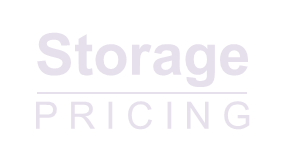You can get Self-Service Nimble Storage Pricing at 4NimbleStorage.com, or follow this link:

Nimble Storage announced the availability of an entry-level converged primary and backup storage array designed and priced to meet the requirements of smaller IT environments and remote offices while delivering the functionality and performance associated with enterprise-class SANs.
The Nimble CS210 combines primary and backup storage in a single array, and is built around a new architecture designed for flash memory in combination with high-capacity drives – a solution that delivers high performance at a low cost.
While the system’s capabilities and usable capacity of 8TB for primary storage and backup system for smaller IT environments, its performance also makes it for I/O-intensive applications such as virtual desktop infrastructure (VDI) deployments. Furthermore, built-in capacity optimization and WAN-efficient replication enable it to serve as a cost-effective offsite storage array for disaster recovery for small to midsize IT environments.
“With the CS210, Nimble has uniquely addressed the storage pains of the mid-market,” said Mitch Gram, vice president of professional services at Sovran, a technology solutions provider and Nimble partner. “Smaller firms have all the challenges of the enterprise for functionality, features and performance in a SAN, but on a smaller scale and with more constrained budgets. The CS210 can help our customers meet those challenges, while providing an ideal solution for demanding environments such as VDI.”
The CS210 breaks new ground in providing disaster recovery at an affordable price. Offering WAN-efficient replication, the solution is up to 20 times more bandwidth efficient than a typical SAN, making DR possible over even moderate-sized WANs and without requiring separate WAN optimization solutions. And the CS210 offers improved recovery point objectives (RPOs) and recovery-time objectives (RTOs) when compared with replicated disk-based backup solutions.
The CS210 delivers enterprise-class functionality:
Performance. The CS210 delivers performance in this form factor and price band, particularly for the most challenging random-read-and-write IO patterns.
Instant, integrated backups and restores. The CS210 eliminates backup windows by enabling instant backups on the same array used for primary storage. Backups take seconds and do not impact application or storage performance.
Intelligent data optimization. A copy of active ‘hot’ data is held in flash, enabling fast reads, while all data is stored in cost-effective, high-capacity disk. Data is laid out sequentially, enabling fast writes to flash and disk.
Inline compression. Unlike existing architectures that store data as fixed-size blocks, Cache Accelerated Sequential Layout (CASL) stores variable-size blocks, achieving 50- to 75-percent compression with no added latency.
Replication. Disaster recovery with the Nimble CS210 is enabled by highly WAN-efficient replication, up to 20 times more efficient than typical SAN replication.
Data recovery. Sixty to 90 days of compressed, block-level incremental snapshots are captured on high-capacity disk at scheduled intervals, improving recovery-point objectives.
Virtualization support. The CS210 provides simplified application management and VM-consistent backups for Microsoft and VMware environments.
Thin provisioning. The CS210 maximizes storage capacity by allocating blocks of data on-demand, virtually eliminating instances of allocated but unwritten space.
Zero copy cloning. With zero copy cloning, the CS210 enables efficient data reuse by allowing entire storage volumes to be copied with no appreciable increase in storage capacity requirements.
High availability. The CS210 incorporates dual, hot-swappable controllers and power supplies with mirrored NVRAM, ensuring system availability.
Administration. An user interface eliminates the complexity of provisioning and managing separate storage, backup and disaster recovery devices, and also removes the administrative overhead of managing massive data copies between tiers. Predefined application and data protection policies allow new volumes to be created in just three steps.
“Smaller mid-market enterprises face the same storage challenges as their large counterparts, even if their storage capacity requirements are an order of magnitude smaller,” said Amita Potnis, senior research analyst, worldwide storage systems, with analyst firm IDC. “Nimble has taken a smart approach to the challenge, building on the exhaustive feature set and proven functionality of its enterprise-class CS220 and CS240 arrays. The CS210 is built for the IT generalist who needs a full-featured SAN with no compromises.”
Innovation
Nimble Storage’s CS Series is based on its Cache Accelerated Sequential Layout (CASL), which enables fast inline data compression, intelligent data optimization leveraging flash memory and high-capacity disk, instant optimized backups and WAN efficient replication – all in a single device. CASL allows organizations to reduce their capital expenditures for storage and backup while eliminating the need for separate, disk-based backup.
Self-Service Nimble Storage Pricing and Availability
The CS210 is available exclusively through authorized Nimble Storage partners.


